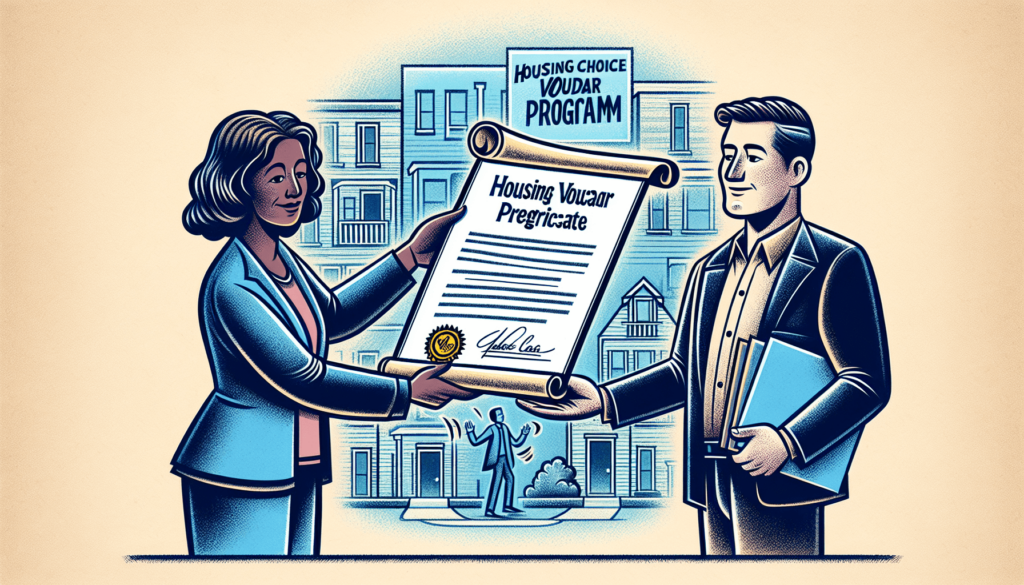Are you eligible for Section 8 housing? This is a key question for many searching for affordable housing solutions. In this article, we break down the Section 8 housing requirements, detailing the eligibility criteria for tenants, the obligations of landlords, and the standards that properties must meet to qualify. Understanding these requirements is the first step towards securing a Section 8 voucher, and we’re here to guide you through what you need to know.
Key Takeaways
- Section 8 housing requires tenant eligibility based on income, family size, and citizenship status, while landlords must adhere to health and safety standards and may be mandated to accept Section 8 tenants in some states.
- Eligibility factors for Section 8 housing vouchers include income limits classified into low, very low, and extremely low compared to the area median income, with priority on lower income thresholds and particular family compositions.
- The Section 8 application process involves finding a local Public Housing Agency (PHA), gathering required documentation, and potentially being placed on a waitlist, while maintaining housing assistance requires compliance with program rules, proper maintenance, and passing regular inspections.
Understanding Section 8 Housing Requirements
The Section 8 program has specific requirements designed to ensure fair, safe, and affordable housing for all participants. These requisites are not just for tenants but also for landlords and the properties involved. From tenant eligibility to property standards, let’s delve into these particulars.
Landlord Participation

When it comes to landlords, Section 8 is not a one-sided affair where only the tenant benefits. Landlords also play a significant role in the program and have certain obligations to meet. They must adhere to local landlord-tenant laws and additional rules established by the Section 8 program. But that’s not all. In some states, such as Massachusetts, it’s mandatory for landlords to accept Section 8 tenants.
Landlords have the liberty to choose their tenants, applying the same standard criteria as they would for other tenants, which includes conducting background and credit checks. However, before a Section 8 tenant can occupy a property, the landlord must submit a Request for Tenancy Approval Form and pass a Housing Quality Standards Inspection. It’s also worth noting that landlords are to respond to maintenance requests and address health or safety concerns for Section 8 tenants, similar to non-Section 8 tenants.
Tenant Eligibility
Now, let’s shift gears and focus on the tenants. If you’re a potential tenant, you’re probably asking, “Am I eligible?” To be eligible for Section 8 housing vouchers, you must meet certain criteria centered around income limits, family size, and citizenship status.
Applicants must be U.S. citizens or possess eligible immigration status within specified non-citizen categories. The eligibility is also by the total annual gross income and family size, ensuring assistance is to those most in need. Remember, these criteria are in place to ensure that the assistance reaches those who need it most.
Property Standards

The properties involved in the Section 8 program must meet specific standards to qualify. These standards ensure that the housing provided is safe, decent, and sanitary. The properties must have:
- Operational safety devices
- Secure railings
- Functional windows and doors
- No exposed electrical wires with cover plates.
Cleanliness is key for a suitable housing unit. Properties should be:
- Clean, free from pests or infestations, and have no mold or mildew in moisture-prone areas.
- Landlords must provide reasonable accommodations to tenants with disabilities to meet Section 8 standards.
- All plumbing fixtures must be in proper working order with no leaks.
- Properties must have a stable supply of electricity, heat, and functional appliances if provided.
Key Factors Affecting Section 8 Eligibility
Now that we understand the basics, let’s delve deeper into the factors that affect eligibility for Section 8 housing. From income limits to family composition and criminal background, these factors can influence whether or not you qualify for a housing voucher.
Income Limits and Adjustments

One of the primary factors affecting eligibility is income. The income limits for Section 8 are typically by the median income of the area and also by the size of the household. These adjustments help ensure that the program’s benefits are appropriate to the needs of the individuals and families it serves. There are three classifications for Section 8 housing applicants: low income (up to 80% median income), very low income (up to 50% median income), and extremely low income (up to 30% median income).
To qualify for Section 8 housing, a family’s income must not exceed 50% of the area median income, and 75% of vouchers are reserved for those whose income does not surpass 30% of the area median income. It’s important to note that income limits for Section 8 housing may be adjusted upward for areas with high housing costs and may be lower in areas with lower housing costs, taking into account family size, local housing costs, and economic conditions, as well as median income levels.
Family Composition
Family size also significantly influences eligibility, as does a household’s adjusted income. Low income families with children, the elderly, and individuals with disabilities are given special priority. This helps ensure that those who need assistance the most receive the help they require. Moreover, households with a documented disability may qualify for a larger housing unit or an extra bedroom and can achieve priority status by providing medical evidence and documentation of the disability, including any Social Security disability compensation received.
To qualify for the Housing Choice Voucher program, tenants need to supply detailed family composition information as part of their application, including their family’s income. So, whether you’re a family of four or a single parent with one child, your family composition could affect your eligibility and the amount of assistance you receive.
Criminal Background and Eviction History
Another crucial factor is criminal history. Certain restrictions related to recent criminal activity and certain convictions can impact eligibility for Section 8 housing. If you have recent criminal activity or specific convictions within the last five years, you may be disqualified from participating in the Section 8 program.
Engaging in illegal activities, damaging the property, or committing fraud related to the program can lead to termination from the Housing Choice Voucher program. When applying for Section 8, you’ll be asked for a range of information, including your criminal history. So, it’s crucial to be aware of how your past actions can influence your eligibility.
The Application Process for Section 8 Assistance
Navigating the application process can feel overwhelming, but it doesn’t have to be. From contacting your local Public Housing Agency (PHA) to gathering the necessary documentation and understanding waitlists, we’ve got you covered.
Finding Local Public Housing Agencies

Your journey to Section 8 housing starts with finding your local Public Housing Agency (PHA) that manages the local public housing program. Local housing agencies are responsible for administering housing choice vouchers for the Section 8 program. If you’re not sure where to start, the HUD website is your best friend. It organizes PHAs by state, city, or zip code and provides contact information.
You can also find your local housing authority by selecting your state from a list or using a map provided on the HUD’s official website. Alternatively, you can search online using your location and ‘housing authority’ as keywords. With these resources at your fingertips, finding your local PHA is just a click away.
Required Documentation
Once you’ve found your local PHA, the next step is to gather the required documentation. This is crucial for verifying your identity, income, family composition, and citizenship status. To confirm your identity, you’ll need to provide documents such as social security cards, birth certificates, and state or government-issued photo IDs.
Income is a significant factor in Section 8 eligibility, so you’ll need to show proof of income, assets, and benefits. You’ll also need to provide proof of family composition and citizenship status. Document preparation can be time-consuming, but it’s a vital part of ensuring your application is complete and accurate.
Waitlists and Priority Status
After you’ve sent in your application, you might find yourself placed on a waiting list. Due to high demand, not all applicants can be accommodated immediately. In fact, Public Housing Agencies may close their waiting lists when there are more applicants than available resources.
Being on a waiting list doesn’t necessarily mean you’re at a standstill. PHAs may set criteria to select families from the waiting list based on factors such as homelessness, living in substandard housing, and paying over 50% of income for rent. Applicants with extremely low income, those who are homeless, living in a shelter, having disabilities, being over the age of 62, or being a veteran may receive priority on the Section 8 waitlist.
Maintaining Section 8 Housing Assistance
Receiving Section 8 assistance, which includes housing assistance payments like the housing assistance payment, is a significant step in obtaining subsidized housing projects in the realm of urban development, but maintaining it requires ongoing effort from both landlords and tenants.
Let’s explore the responsibilities that each party must uphold to ensure continued housing assistance.
Landlord Responsibilities
As a landlord, participating in the Section 8 program comes with responsibility. Regular maintenance is vital to pass Section 8 inspections, which can affect rent subsidies and landlord participation in the program. Landlords must ensure the property meets Section 8 safety and health standards.
When it comes to rent, landlords need to:
- Seek approval from the local Section 8 office for any increases, ensuring compliance with market rates
- Avoid charging tenants for the housing authority’s share of the rent
- Resolve payment issues directly with the housing authority
- Remember, the Public Housing Agency pays the housing subsidy directly to landlords on behalf of the participating family.
Tenant Responsibilities
As a tenant, you also have a role to play in maintaining Section 8 assistance. You must:
- Comply with the lease and program rules
- Maintain housing quality
- Ensure the unit is kept in good condition
- Permit inspections with reasonable notice.
Any changes in family composition or income must be reported within 30 days, as well as extended absences from your housing unit exceeding 90 days. Rent must be paid on time, and any income changes may necessitate an adjustment of rent amounts due. And don’t forget, annual recertification is vital for continuing to receive Section 8 assistance.
Navigating Section 8 Inspections
Now, let’s talk about inspections. An unavoidable part of Section 8 housing is the regular inspection of properties to ensure they meet housing standards. Whether you’re a landlord or a tenant, understanding the inspection process is crucial.
Inspection Types and Frequency

Inspections come in various types: annual, biennial, and complaint-driven. Regardless of the type, it’s recommended for landlords or their representatives to be present during a Section 8 inspection to address any minor issues immediately or clarify certain conditions on the spot.
Inspections can occur at different frequencies depending on the circumstances:
- Annual inspections are obligatory and assess compliance on a yearly basis.
- Biennial inspections occur every two years.
- Complaint-driven inspections are initiated based on specific grievances regarding the property’s condition.
The frequency of each inspection type is determined by the program’s guidelines, with annual inspections being a standard requirement and others scheduled accordingly or as issues arise.
Preparing for Inspections
Preparation is key to a successful inspection. Landlords should ensure all basic utilities are working, including:
- electricity
- plumbing
- heating
- cooling systems
Chipped paint, especially when it comes to potential lead hazards in older homes, is often cited during inspections and must be addressed.
Landlords should also rectify any issues with walls and windows to ensure they are secure, intact, and without dangerous cracks or breaks. Utilizing inspection checklists tailored to Section 8 requirements is a focused way for landlords to verify that all critical elements meet the prescribed standards before an inspection occurs. Checklists can be obtained from the local Public Housing Agency (PHA) or online resources.
Consequences of Failing Inspections
Failure to pass an inspection comes with serious consequences. If a Section 8 property fails an inspection, housing authorities will withhold rent subsidies until all violations are corrected. Landlords are required to make all necessary repairs to meet Section 8 housing quality standards. These repairs typically involve addressing specific health and safety violations cited during the inspection.
Continued failure to address inspection violations can lead to termination of the Section 8 contract with the landlord, resulting in the end of rent subsidies and the tenants being relocated. When a Section 8 contract is terminated due to failed inspections, it can negatively impact the landlord’s ability to participate in the program in the future. Landlords are given a deadline to complete repairs after a failed inspection, and the property will be re-inspected to ensure compliance.
Summary
Navigating the Section 8 housing program may seem complex, but with the right knowledge and resources, it becomes a manageable task. Whether you’re a landlord looking to participate in the program or a tenant seeking affordable housing, understanding the requirements, eligibility factors, and responsibilities can help you make informed decisions. Remember, Section 8 is more than just a housing program; it’s a lifeline for those who need it most.
Frequently Asked Questions
The income limits for Section 8 housing depend on the median income of the area and household size, with classifications including low income (up to 80% median income), very low income (up to 50% median income), and extremely low income (up to 30% median income).
Landlords can prepare for a Section 8 inspection by ensuring all basic utilities are working, addressing any issues with chipped paint, securing walls and windows, and ensuring the property is clean. It can be helpful to use an inspection checklist to ensure thorough preparation.
If a property fails an inspection, the housing authority will withhold rent subsidies until all violations are corrected. Continued failure can lead to termination of the Section 8 contract, so it’s important to address any issues promptly.
Section 8 tenants are responsible for complying with the lease and program rules, maintaining the quality of the housing, reporting changes in family composition or income, and participating in annual recertification. These are important responsibilities that help ensure the smooth operation of the program.
To find your local Public Housing Agency (PHA), you can use the HUD website to search by state, city, or zip code. Alternatively, you can search online using your location and the keywords “housing authority.”










